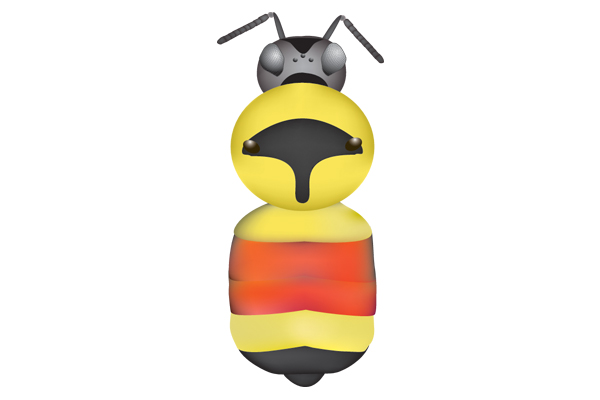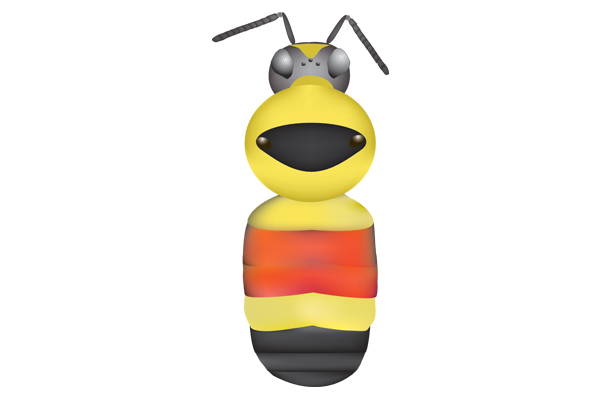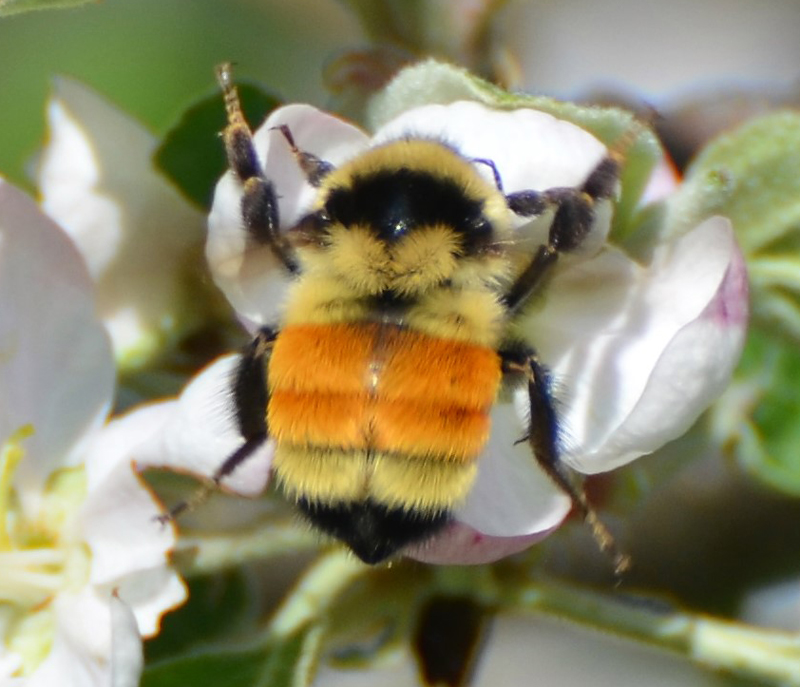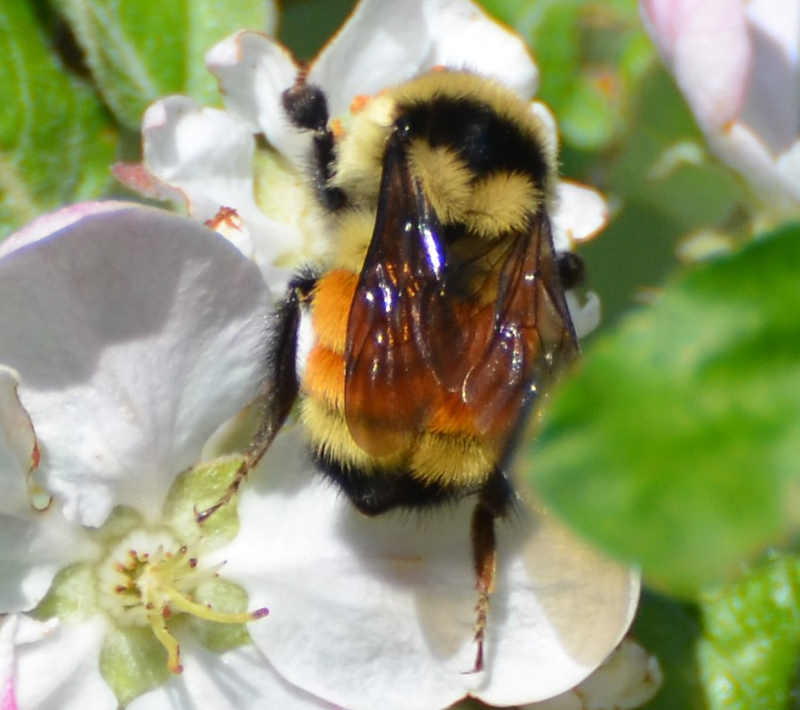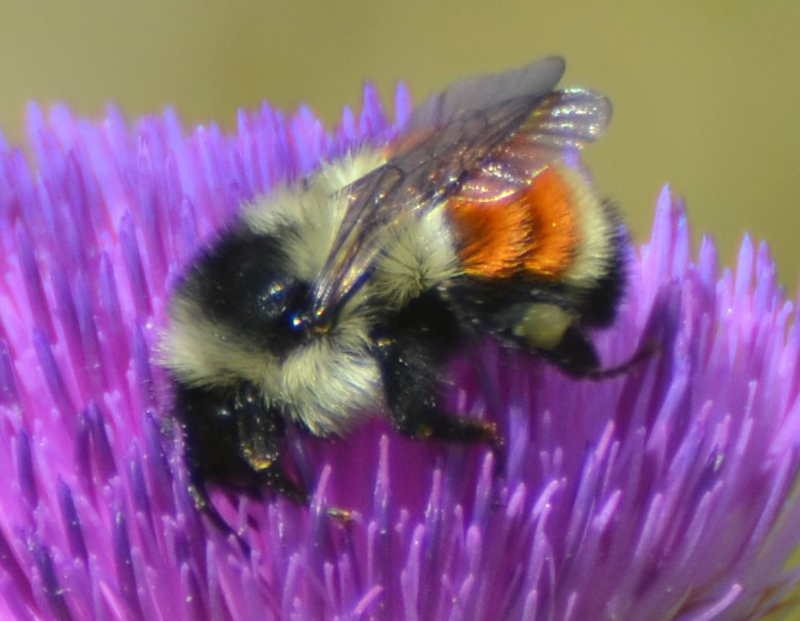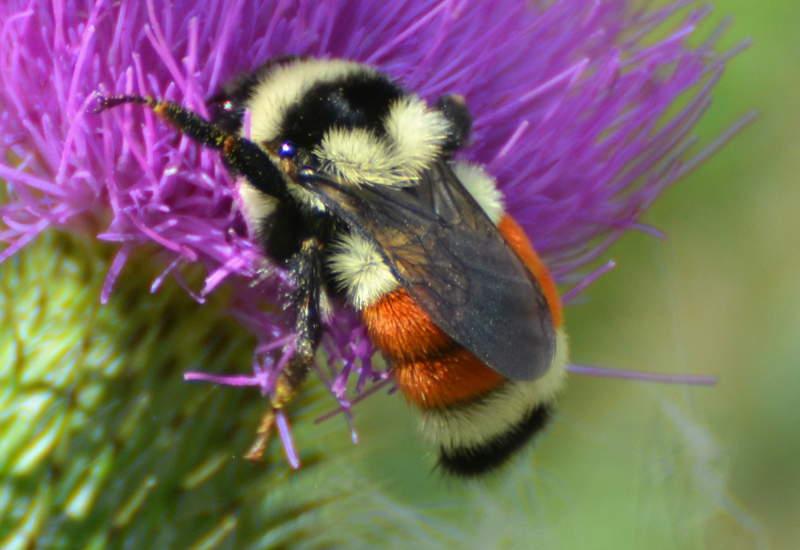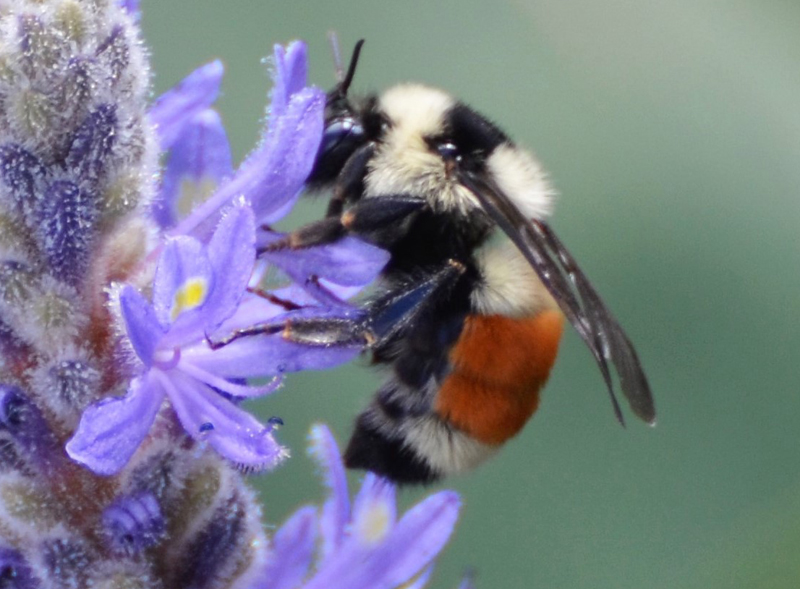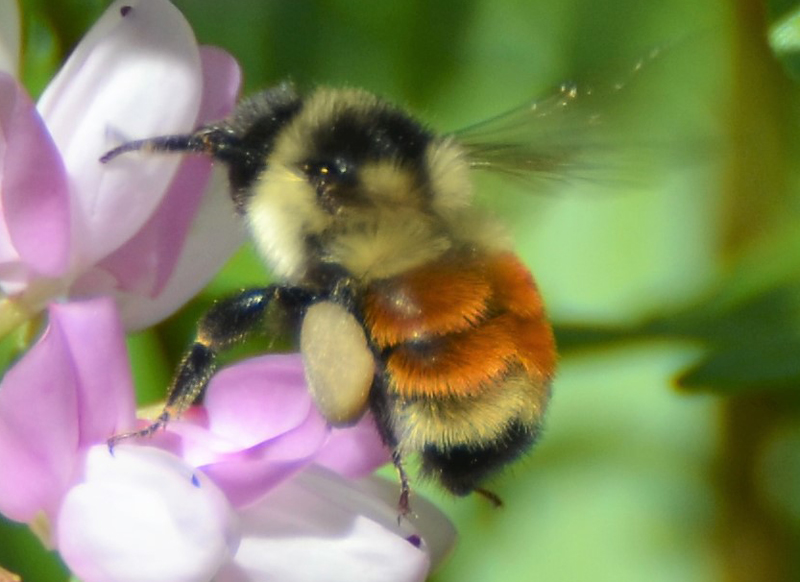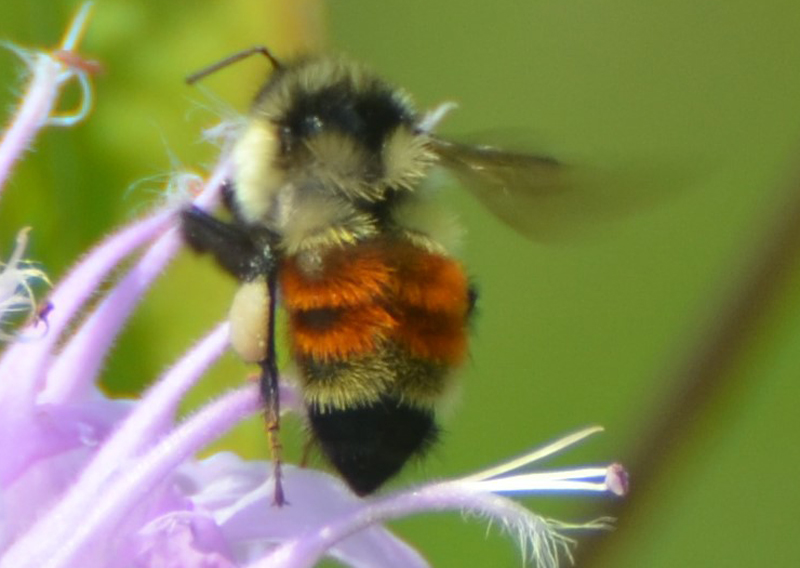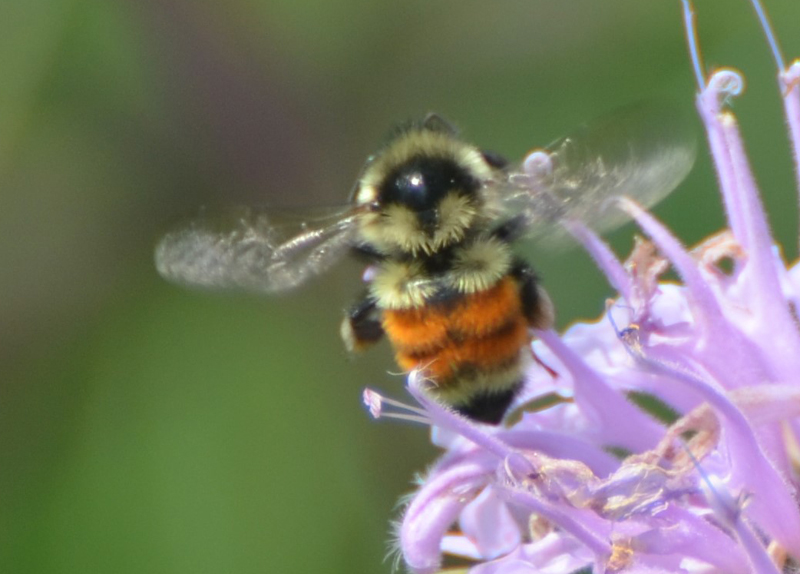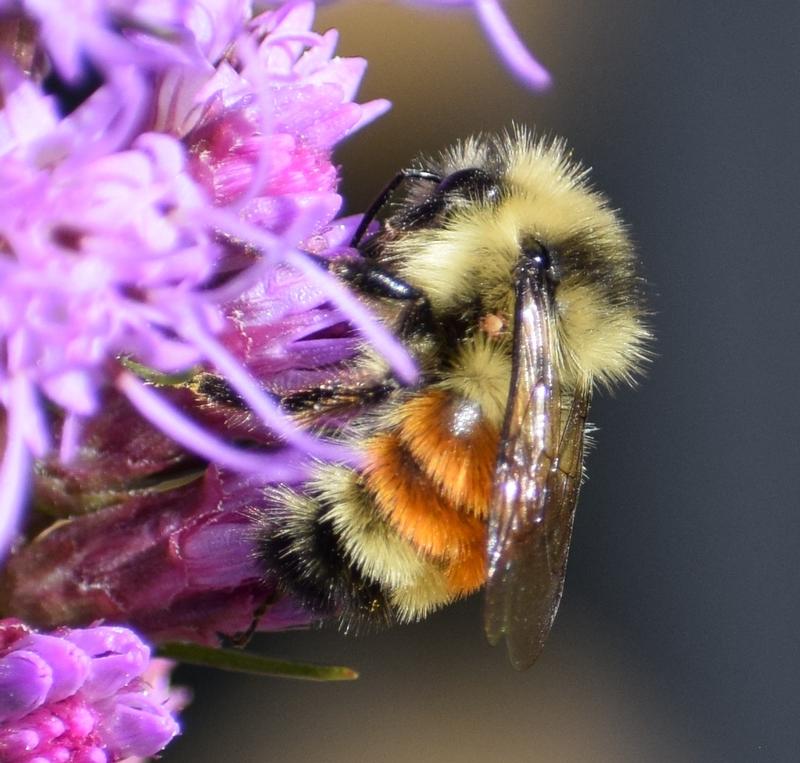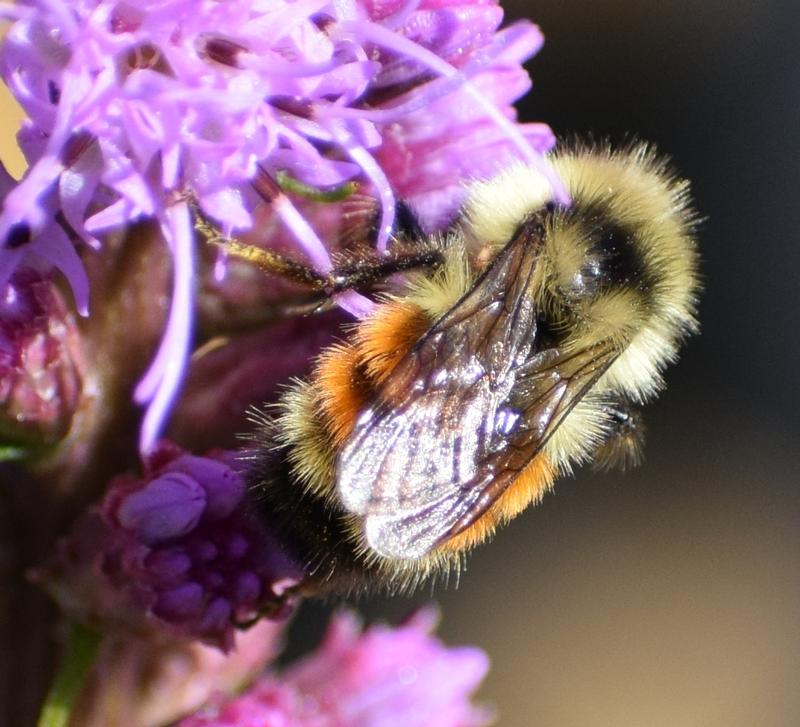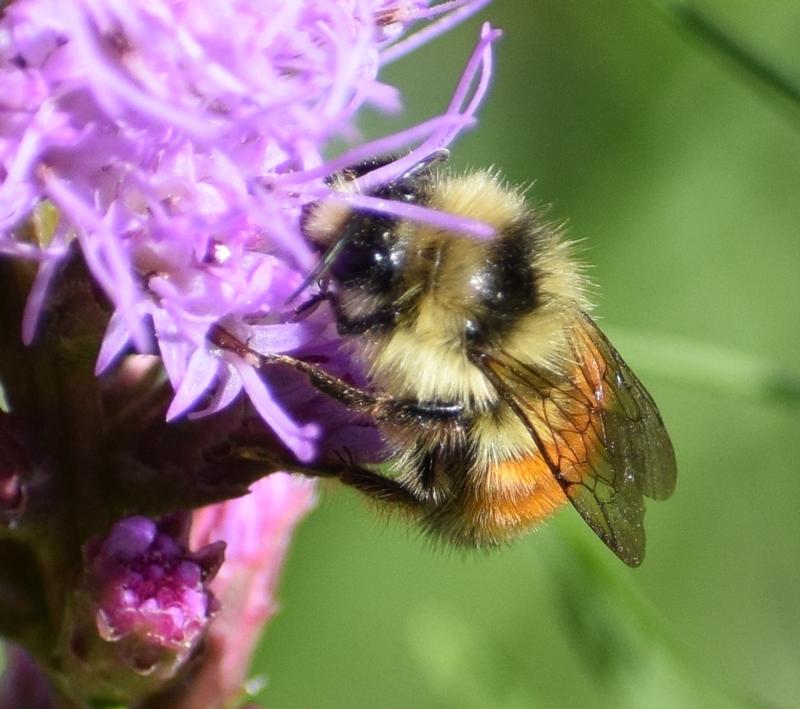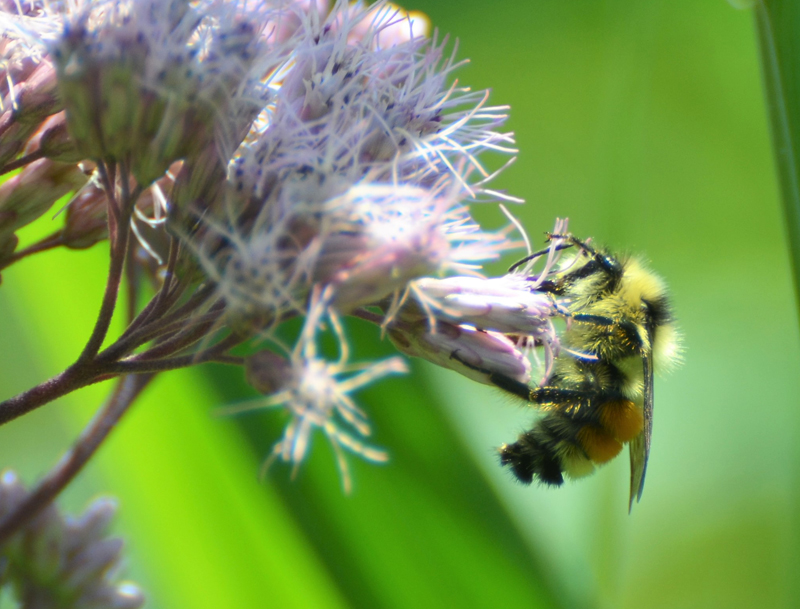
Status-Global/State:
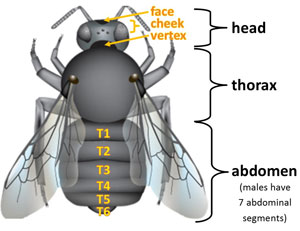
Identification:
- Worker – Face and vertex yellow or intermixed. Thorax mostly yellow with a triangular shaped black band between the wingpads that points towards the abdomen. Abdominal segment T1 yellow, T2-3 orange, T4 yellow, and T5-6 black.
- Queen/gyne – Similar to workers, but are larger and appear earlier in the season.
- Male – Face and vertex yellow. Thorax mostly yellow with black band between the wingpads. Abdominal segment T1 yellow, T2-3 orange, T4 yellow, and T5-T7 either black, yellow, or a combination.
- Other distinguishing features – Hair short and even.
Similar Wisconsin Species:
Similar bumble bee species in Wisconsin are the red morph of the redbelted bumble bee (B. rufocinctus) (Colla et al. 2011).
Description of Habitat/Range:
Known habitats include wooded and wetland areas (Williams et al. 2014). Nests have been found mostly underground (Colla et al. 2011, Williams et al. 2014).
Nectar Plants
The tricolored bumble bee is a medium-tongued species (Williams et al. 2014). Nectar plants include Asclepias (milkweeds), Claytonia, Eupatorium (Joe-pye weed), Rhododendron, Rubus (blackberry), Solidago (goldenrods), Symphyotrichum, Taraxacum (dandelion), Trifolium (clovers), and Vaccinium (blueberry) (Williams et al. 2014, Colla et al. 2011).
Data from verified B3 observations [updated 2/28/2024].
Flight Season:
In Wisconsin, observation records have been made in May through October. Range-wide, queens start emerging in April and enter diapause by September (Colla et al. 2011).
Literature Cited:
Colla, S., Richardson, L. and Williams, P. (2011) Bumble Bees of the Eastern United States. A product of the USDA Forest Service and the Pollinator Partnership with funding from the National Fish and Wildlife Foundation.
Hatfield, R., Jepsen, S., Thorp, R., Richardson, L. & Colla, S. 2014. Bombus ternarius. The IUCN Red List of Threatened Species 2014: e.T44937988A69005644.
Williams, P.H., Thorp, R.W., Richardson, L.L. and Colla, S.R. (2014) The Bumble bees of North America: An Identification guide. Princeton University Press, Princeton.
